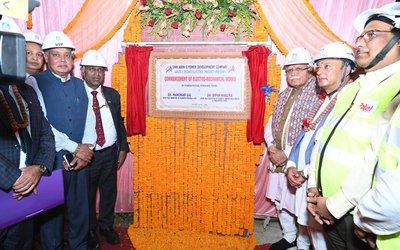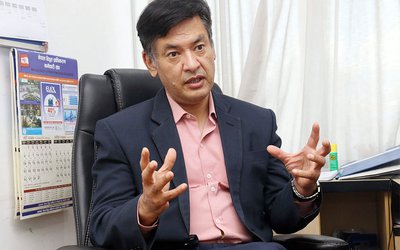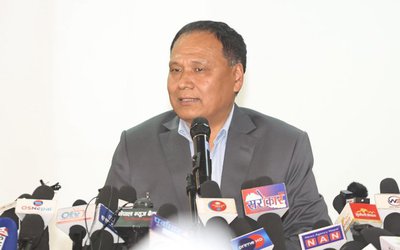
The Government of Nepal recently announced that it would start selling firewood. According to the government, this measure is supposed to provide ‘respite’ to the ongoing fuel crisis. Even before the government made firewood available, many of us must have already kept some firewood as stock, in case cooking gas becomes unavailable. When one is highly preoccupied with devising strategies to live a relatively comfortable life in a time of crisis, one can barely raise who, how, when, what, and where questions. However, as we continue experiencing extreme temperatures and as each major city in Nepal begins resembling a concrete jungle, one cannot help but raise the question –how is Nepal going to adapt to the unavoidable climate change while fulfilling its current needs?
One may ask – Why is Nepal’s ability to adapt to climate changes a key concern, especially now, as the country already has the aftermath of the earthquake and the fuel crisis to deal with? It is a concern because first, according to the Asian Development Bank’s (ADB) climate and economics report for South Asia, the nation may experience 10 percent GDP loss from glacier melts and climate extremes. Hence, this can heavily impact Nepalese economy, already rendered fragile by the earthquake and the ongoing fuel crisis. Second, agriculture, which is the backbone of Nepalese economy, is heavily reliant on increasingly precarious monsoon patterns. Third, if the economy cannot adapt to the climatic changes, the conditions of poverty and inequality are likely to exacerbate further.
Let us first proceed with the question, what is adaptation? As expert Ajay Dixit rightly points in his article, Climate Change in Nepal: Impacts and Adaptive Strategies, ‘adaptation’ should be clearly differentiated from ‘coping’. Elaborating this statement further, adaptation is neither merely adjusting one’s habits to deal with unavoidable circumstances, nor is it responding to such circumstances in a quick and dirty way. According to Dixit, adaptation involves systematic adjustments in ecological, social, and economic systems in order to respond to actual or expected climatic stimuli, their effects and impacts. Past experience shows that it has been difficult for Nepal to really adapt to changes in social, political, economic, and climactic situations of the country. Selling firewood is an example of the fact. Depleting our natural resources to cope with current fuel crisis is not adaptation; as Dixit notes, adaptation leads to people and systems actually ‘do (ing) well’ despite changing situations.
Next, the question that remains to be answered is – how can the Nepalese economy adapt to the inevitable climate change and its subsequent effects? In other words, how can Nepalese economy ‘do well’ in the face of current climatic changes? The two options that present themselves are a) to alter our strategies as the systems on which the livelihoods of a majority of Nepali people are based are not resilient enough and b) to really prioritize the development of those strategies that have the greatest potential.
I would like to reiterate a well-known fact – the livelihoods of a majority of the Nepalese population are largely dependent on agriculture. And our agricultural system is not resilient enough – only 21% of Nepal’s area is cultivable and irrigation greatly depends on local surface resources, largely affected by erratic rainfall. The state should begin to alter its strategies and should be able to provide people with a range of economic and livelihood options. I acknowledge that economic diversification is easier said than done, especially in a country that has been reliant on agriculture for a long period of time. However, economic diversification can happen in small and familiar steps. For example, encouraging the production of those crops that are flood and draught tolerant is achievable and can be considered as a step towards economic diversification. Furthermore, investing in proper assessment of the natural resources available in various geographical areas of the country can also generate ideas for economic diversification.
Some strategies are already existent, but they should be prioritized and developed further. First, Nepal should take utmost advantage of a positive impact of globalization – developing countries, including Nepal, have been able to adopt technologies from developed countries with relative ease and lowered cost. The state should carefully assess the strategies and technologies adopted by developed countries to adapt to climate change and discern those that can be implemented in Nepal, given its varied climate and available resources. Second, Nepal should strengthen its policies to ensure the inclusion of vulnerable groups in its economic plans and programs. As such groups are likely to bear the brunt of any form of crisis, it is necessary to prioritize strategies that will lessen negative impacts on vulnerable groups and will prevent poverty rates from increasing.
Climate change is inevitable and is likely to greatly impact the economy of developing countries. If Nepal takes necessary steps in time, then the county may not only ‘cope’ but also ‘do-well’.
- Poor (country) on a pile of money
- Dec 16, 2016
- Careful Financial Regrouping Cutbacks Imminent
- Nov 18, 2016
- Women Securing Water
- Oct 01, 2016
- Faithful or Fearful Fluctuations
- Aug 31, 2016
- Walking on Prachanda path?
- Aug 11, 2016
















